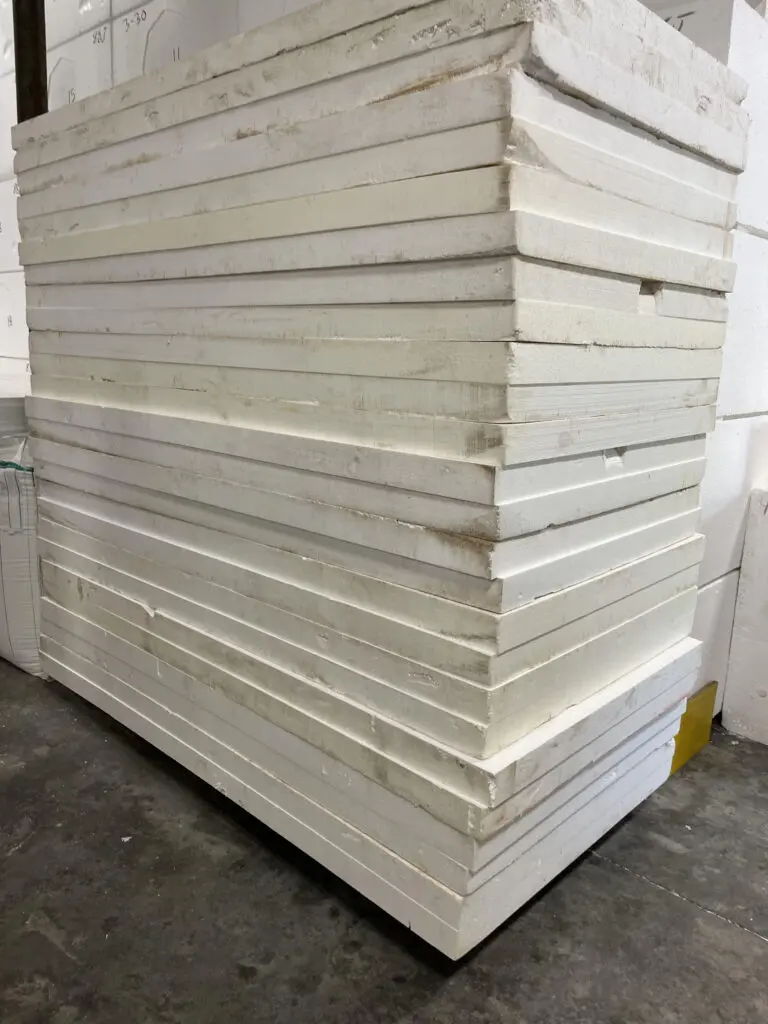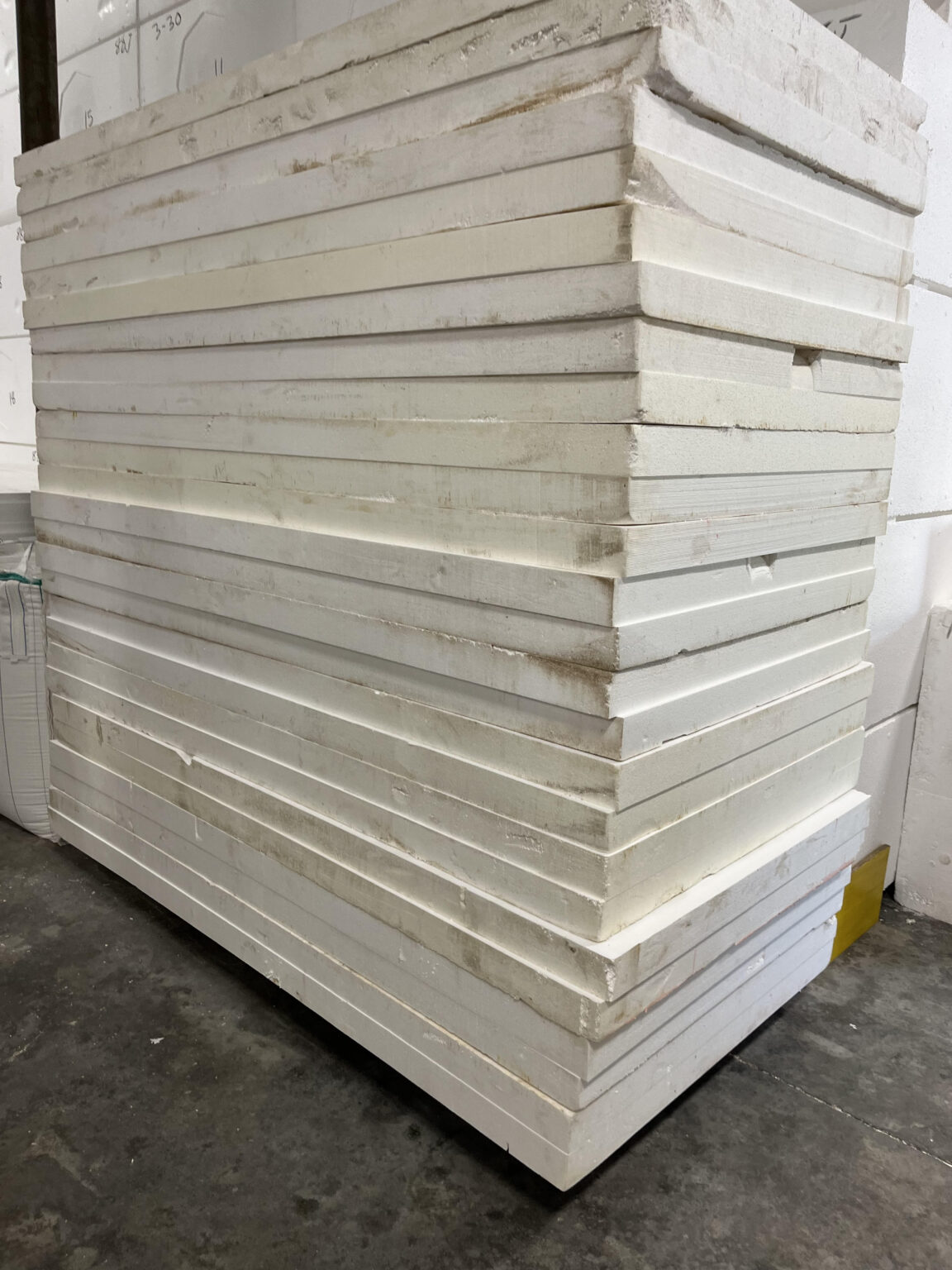
XPS, EPS, and Polyiso Foam Panel Insulation: Performance, Blowing Agents, Thermal Drift, and Environmental Impact
In cold climates, effective insulation is essential for energy efficiency and comfort. Among the most popular insulation materials are polyisocyanurate (polyiso), extruded polystyrene (XPS), and expanded polystyrene (EPS) foam panels. These materials are widely used for their thermal insulating properties, but their long-term performance can vary due to factors like thermal drift and blowing agent composition. Additionally, the environmental impact of the blowing agents used in these foam products is increasingly being scrutinized, especially their contribution to global warming.

Here we explore the performance of these foam panel types, the phenomenon of thermal drift, the global warming potential (GWP) of the blowing agents used, and how new, environmentally friendly alternatives are reshaping the insulation industry.
Performance of Polyiso, XPS, and EPS in Cold Climates
Polyisocyanurate (Polyiso)
Polyiso is known for its high initial R-value (R-6 to R-7 per inch), making it one of the most efficient insulating materials available. However, in cold temperatures (below 40°F), its R-value can decline, making it less effective in extreme climates. Polyiso panels are also somewhat brittle, which can lead to installation challenges and susceptibility to damage.
Extruded Polystyrene (XPS)
XPS offers a balance of durability and performance, with a typical R-value of ~R-5 per inch. Its insulation performance remains stable in cold climates, and it is more resistant to moisture than polyiso, making it suitable for both above- and below-grade applications.
Expanded Polystyrene (EPS)
EPS is the most cost-effective option but has the lowest R-value (R-3.6 to R-4.2 per inch). While its performance is stable over time due to its lack of reliance on high-GWP blowing agents, its lower thermal resistance may require thicker panels for equivalent insulation. EPS is also more fragile compared to XPS and polyiso, and its moisture resistance is limited.
Thermal Drift in Foam Panels
Thermal drift refers to the reduction in the R-value of foam insulation over time. This occurs when the blowing agents used to create the foam’s structure escape from the cells and are replaced by air, which has lower insulating properties. Different foam types exhibit varying degrees of thermal drift based on the type of blowing agent used.
| Foam Type | Blowing Agent | Initial R-value per inch | Long-term R-value per inch | Thermal Drift |
|---|---|---|---|---|
| Polyiso | HFC-245fa | ~R-6 to R-7 | ~R-5 to R-5.5 | High |
| Polyiso | Pentane | ~R-6 | ~R-5 | Moderate |
| Polyiso | HFO-1234ze | ~R-6.5 | ~R-6 | Low |
| XPS | HFC-134a | ~R-5 | ~R-4.7 | Moderate |
| XPS | HFO-1234ze | ~R-5 | ~R-5 | Low |
| EPS | Pentane (air) | ~R-3.6 to R-4.2 | ~R-3.6 to R-4.2 | Minimal |
- Polyiso with HFC-245fa experiences the most thermal drift due to the significant loss of blowing agents, reducing its R-value over time. Newer blowing agents like HFO-1234ze result in lower thermal drift, making polyiso more stable in the long term.
- XPS panels with traditional HFC-134a blowing agents also experience thermal drift, but the shift to HFO-1234ze reduces this effect, maintaining more consistent R-values over time.
- EPS uses air or low-GWP blowing agents like pentane, which results in minimal thermal drift.
The Environmental Impact of Blowing Agents
Blowing agents play a crucial role in the formation and insulation properties of foam panels, but many traditional blowing agents have a high global warming potential (GWP). GWP measures the relative impact of a gas on global warming over a specific time frame, compared to carbon dioxide (CO₂). Blowing agents with high GWP have significant environmental impacts because of their potent greenhouse effects.
GWP of Blowing Agents in Foam Insulation
| Blowing Agent | Global Warming Potential (GWP) | Foam Insulation Type |
|---|---|---|
| HFC-134a | 1,430 | XPS |
| HFC-245fa | 1,030 | Polyiso, Spray Polyurethane |
| Pentane | 7 | EPS, Polyiso |
| HFO-1234ze | <1 | XPS, Polyiso, Spray Foam |
- HFC-134a and HFC-245fa have very high GWP, contributing significantly to climate change. These agents are used in traditional XPS and polyiso foams but are being phased out in favor of alternatives.
- Pentane, used in EPS and some polyiso products, has a much lower GWP (7), making it more environmentally friendly than HFCs.
- HFO-1234ze, a next-generation blowing agent, has a GWP of less than 1 and is becoming the preferred option for both XPS and polyiso due to its minimal environmental impact.
Sustainable Alternatives to High-GWP Blowing Agents
The environmental drawbacks of HFC-based blowing agents have led to a shift toward low-GWP alternatives such as pentane and HFOs. These newer agents provide insulation properties comparable to their high-GWP counterparts, but with a drastically reduced impact on climate change. For example, HFO-1234ze is now being widely adopted in the production of XPS and polyiso, offering low thermal drift and high insulation performance with a minimal contribution to global warming.
This move is aligned with global efforts to phase out hydrofluorocarbons (HFCs) under the Kigali Amendment to the Montreal Protocol, which aims to reduce the use of high-GWP substances across various industries, including insulation.
When choosing foam panel insulation, it’s critical to consider not just the thermal performance but also the long-term stability and environmental impact of the blowing agents used. XPS provides stable thermal insulation with low drift when using environmentally friendly blowing agents like HFO-1234ze, while polyiso offers high initial performance but can suffer from thermal drift if older HFC-based blowing agents are used. EPS, though less insulating per inch, maintains stable long-term performance with minimal environmental impact due to its use of pentane and air-based insulation.
By opting for foam panels with low-GWP blowing agents, such as pentane and HFOs, builders can improve both the energy efficiency of buildings and reduce their contribution to global warming. These advancements make foam panel insulation a more sustainable choice for cold climates, ensuring that performance and environmental responsibility go hand in hand.
At Green Insulation, we understand the importance of high-performance insulation that not only delivers exceptional energy efficiency but also minimizes environmental impact. Our recycled and reclaimed foam panel insulation products provide a sustainable solution, reducing waste and reusing high-quality materials that continue to perform effectively in cold climates. By choosing reclaimed polyiso, XPS, or EPS panels, you’re not only saving money but also reducing your carbon footprint by reusing materials that would otherwise contribute to landfill waste. Make the responsible choice—contact Green Insulation today to learn how our eco-friendly foam panels can help you build a greener, more energy-efficient future.
